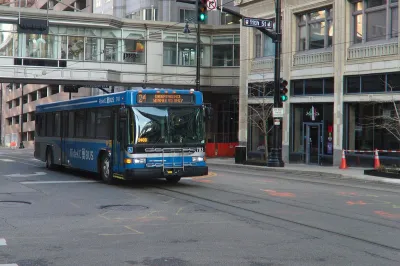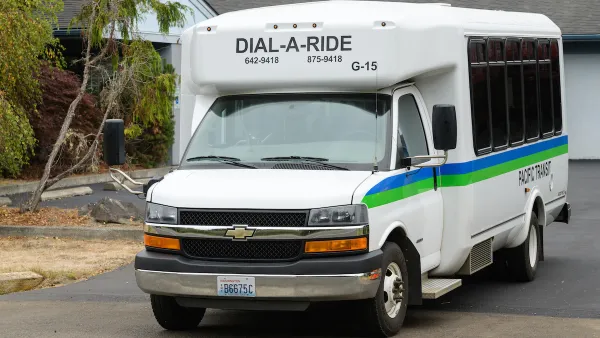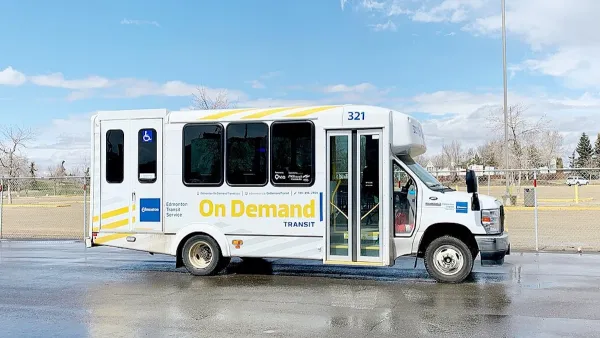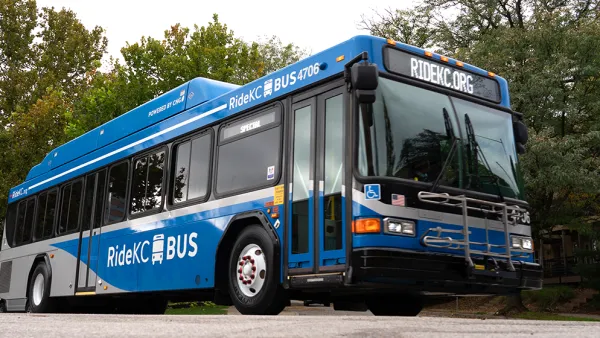The city’s costly experiment with on-demand transit is yielding to more strategic investment.

In 2016, Kansas City, Missouri became a pioneer in ‘microtransit,’ on-demand transportation services used to supplement or — in some cases — replace public transit.
In a piece for Bloomberg CityLab, David Zipper describes the city’s experiment and interviews Kansas City Area Transportation Authority CEO Frank White III, who says the original goal of introducing microtransit was to get more people to ride transit.
White admits that the public subsidy for the city’s current on-demand transit service is between $20 and $25 per passenger — roughly ten times as much as a fixed-bus route. But White asserts that “It works best in less dense areas. You could use it in rural areas where there is no fixed route service at all, or you could use it as a feeder system to nearby buses — but then the whole system has to be correlated, which can be challenging.”
For White, microtransit can also be a tool for gauging public interest in transit to pave the way for future fixed-route service and serving areas with no other options. “I think we’ll see more strategic use of microtransit, focusing on less dense areas and connecting with our fixed-route buses.”
FULL STORY: Kansas City Looks Back on its Long, Costly Ride With Microtransit

National Parks Layoffs Will Cause Communities to Lose Billions
Thousands of essential park workers were laid off this week, just before the busy spring break season.

Retro-silient?: America’s First “Eco-burb,” The Woodlands Turns 50
A master-planned community north of Houston offers lessons on green infrastructure and resilient design, but falls short of its founder’s lofty affordability and walkability goals.

Delivering for America Plan Will Downgrade Mail Service in at Least 49.5 Percent of Zip Codes
Republican and Democrat lawmakers criticize the plan for its disproportionate negative impact on rural communities.

Test News Post 1
This is a summary

Test News Headline 46
Test for the image on the front page.

Balancing Bombs and Butterflies: How the National Guard Protects a Rare Species
The National Guard at Fort Indiantown Gap uses GIS technology and land management strategies to balance military training with conservation efforts, ensuring the survival of the rare eastern regal fritillary butterfly.
Urban Design for Planners 1: Software Tools
This six-course series explores essential urban design concepts using open source software and equips planners with the tools they need to participate fully in the urban design process.
Planning for Universal Design
Learn the tools for implementing Universal Design in planning regulations.
EMC Planning Group, Inc.
Planetizen
Planetizen
Mpact (formerly Rail~Volution)
Great Falls Development Authority, Inc.
HUDs Office of Policy Development and Research
NYU Wagner Graduate School of Public Service





























